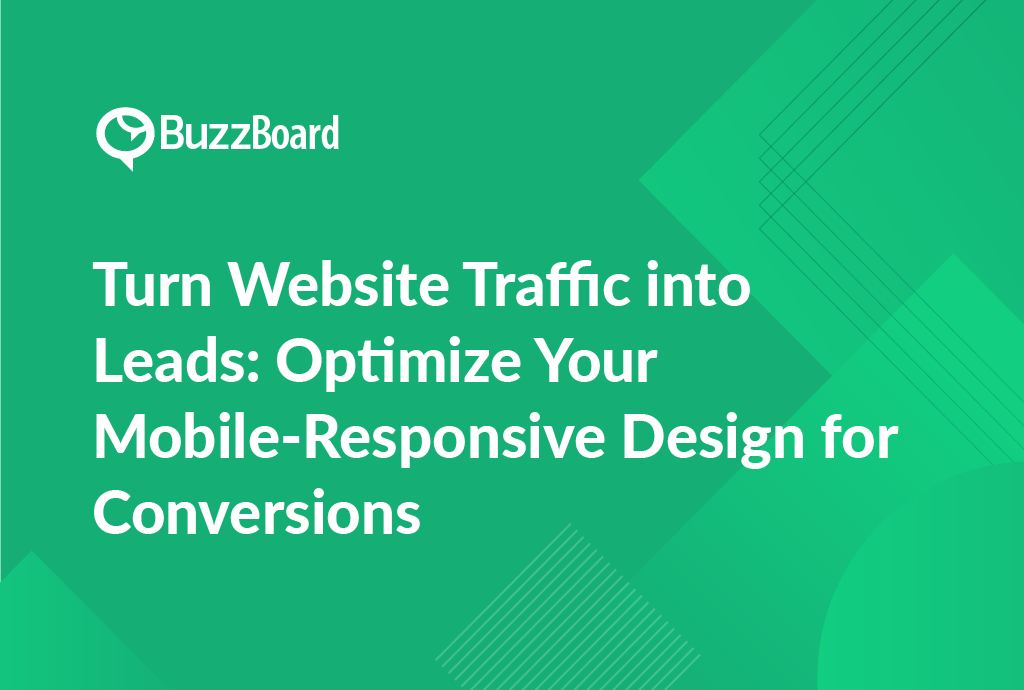What Is Mobile Responsive Design and Its Importance for a Local Business
Mobile responsive design, often simply referred to as responsive design, is an essential element of digital marketing and web development. This design method ensures your local business website adapts to the viewing environment, making it as attractive and navigable on a mobile device, such as a smartphone or tablet, as it is on a desktop.
In today’s digital era, optimizing mobile responsiveness for a local business website is not merely an additional feature; it’s a necessity for success online. Studies show that over half of global web traffic is generated through mobile phones. So, ignoring the mobile audience might mean missing opportunities with a substantial pool of potential customers.
Using responsive design on your local business website provides a seamless user experience, irrespective of the device used. Favoring the mobile audience can also influence your search engine ranking positively, as Google rewards mobile-friendly websites.
When you prioritize mobile website responsiveness in your local business marketing, it shows your end-users that you are adaptable and forward-thinking, significantly enhancing your business credibility.
Always remember, your ultimate goal is to offer the best user experience to your audience, whether on desktop or mobile platforms. Responsive design is a significant step towards achieving this goal.
Techniques to Turn Website Traffic Into Leads With Mobile Responsive Design
Effectively driving lead generation for local businesses requires optimizing mobile responsiveness on your website. With a significant portion of internet users browsing on mobile devices, having a mobile-friendly website is crucial.
Responsive design lies at the heart of a mobile-friendly website. It ensures your website adapts and displays well on all screen sizes, alleviating the necessity for a separate mobile-focused design. However, beyond mobile-friendliness, a responsive design can markedly enhance user experience, engagement, and conversions.
To maximize the benefits of your website’s traffic, you need to morph it into a conversion hub. A key strategy to boost your local business website’s lead generation potential is refining your call-to-action (CTA) placement. Strategically positioning these where users are most likely to act can notably amplify your leads.
A worth-mentioning technique is making your contact information easily accessible, thereby reducing friction in the process of contacting you. A user-friendly mobile website design promotes positive user experience, fostering trust with your potential customers – a crucial factor in lead conversion.
You can also leverage Google’s ‘Click-to-Call’ function, enabling users to call your business directly from search results, thereby decreasing potential lead losses.
A mobile-responsive design is a potent tool in local business marketing. It not only enhances user experience but also escalates conversion rates.
The Role of Optimizing Mobile Responsiveness in Local Business Website Conversions
In the rapidly growing realm of local business marketing, optimizing mobile responsiveness on your local business website is a prerequisite for enhancing conversions. The surge in individuals accessing the internet via mobile devices makes this approach crucial. Recent statistics reveal more than half of all internet traffic originates from mobile devices.
Responsive design plays a pivotal role in improving a mobile website’s user experience. Essentially, this approach ensures that your website adjusts to fit any device’s screen – be it a smartphone, tablet, or desktop – thus minimizing customer churn.
A mobile-responsive site preserves its intuitive user interface, regardless of screen size. This lends itself to a more seamless navigation experience for the user, invariably increasing user engagement, and improving your odds of converting visitors into paying customers.
Notably, Google awards higher priority to mobile-responsive sites in their search rankings. This means that your local business website’s visibility escalates, leading to increased traffic and, consequently, more conversions and greater sales.
It’s imperative for digital marketing agencies focusing on small and local businesses to embed adaptive, mobile-responsive website designs into their sales pitches. This strategy ultimately helps your clients realize higher conversion rates.
Case Studies of Successful Optimization of Mobile-Responsive Designs Leading to Increased Traffic and Conversions
The importance of optimizing mobile responsiveness for local business websites is underscored by several successful case studies, reflecting the need to adapt to an evolving digital landscape with shifting consumer behavior. Given the sharp increase in mobile web traffic, responsive design has emerged as a vital component of local business marketing tactics.
For instance, consider the case of ICICI Bank, a multinational bank based in India, known for its pioneering digital strategies. By emphasizing an improved mobile website to enhance its customer experience, the bank successfully drove an increase in web traffic by 12% and conversions by approximately 35% within three months. The bank’s success can be credited to the implementation of modal windows to aid mobile users, simplified navigation, and a streamlined application process. This case exemplifies the direct correlation between responsive design and business success.
In another case, WorthPoint, a collectibles resource website, managed to double its mobile sessions through a site-wide responsive redesign. These transformations are not exclusive to large-scale enterprises, with many small-scale and local businesses also reaping the benefits of mobile optimization.
The necessity to optimize mobile responsiveness for local business websites has become a primary focus for digital marketing agencies catering to small businesses. Salespeople have begun showcasing responsive design as a primary selling point for their solutions.
Obstacles and Solutions in Enhancing Mobile Responsiveness for a Local Business Website
Boosting mobile responsiveness for a local business website can encounter various hurdles, but learning to tackle these challenges can substantially enhance user experience and, in turn, business success.
Difficulty in implementing responsive design due to a variety of screen sizes across mobile devices can pose a challenge. This can lead to inconsistent viewing experiences, potentially discouraging prospective clients.
Moreover, local businesses may not fully comprehend the significance of optimizing mobile responsiveness. Many may not understand that a non-responsive website can adversely affect their local business marketing endeavors, considering most individuals now access the internet through mobile devices.
So, what’s the solution?
Educating local business owners about the importance of mobile responsive design is key. Highlighting the possible surge in customer engagement and conversion rates can urge them to invest in improving their website’s mobile view, bolstering their digital marketing strategy.
Employing modern web design techniques such as fluid grids, flexible images, and media queries can substantially augment a website’s mobile responsiveness. These components contribute to a dynamic website layout that adjusts to various screen sizes.
Also, utilizing the services of experienced professionals can significantly streamline the process. They possess the knowledge and resources necessary to develop an efficient and responsive mobile website, enhancing a company’s online presence and elevating engagement.
Bear in mind, an impressive mobile website is not just about aesthetics; it’s about offering a smooth and user-friendly experience to potential customers. Elevating your website’s mobile responsiveness could be the edge you need to distinguish yourself in the competitive digital landscape.








